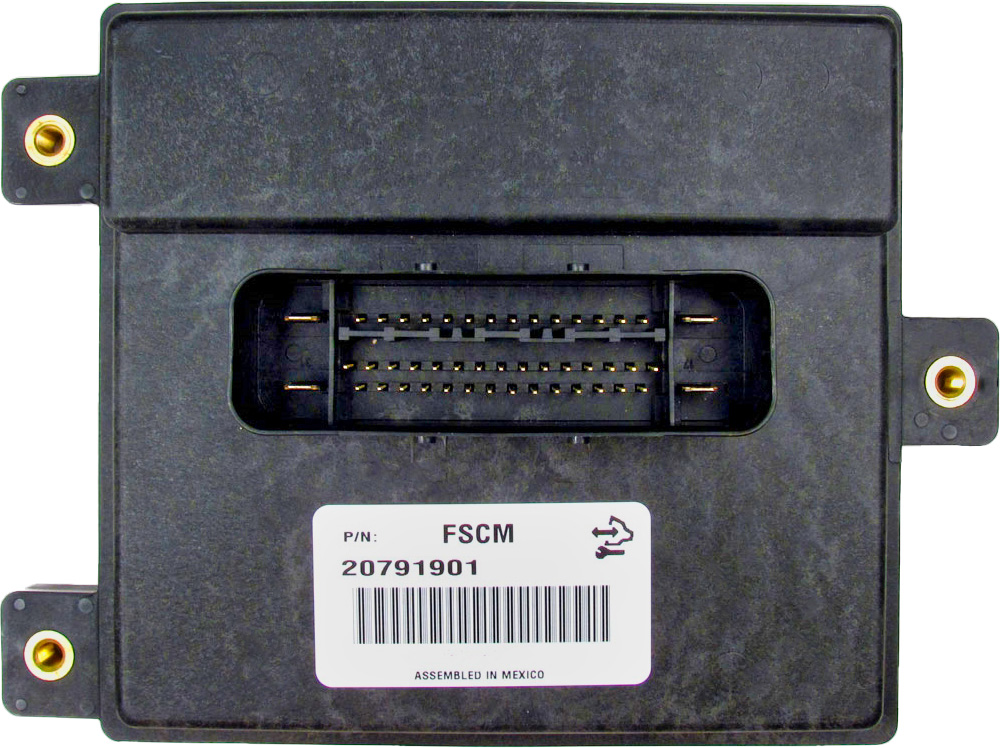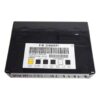Is Your Silverado Stalling, Sputtering, or Refusing to Start?
If you’re experiencing frustrating engine problems with your 2007-2009 GM truck or SUV, a faulty Fuel Pump Control Module (FPCM), also known as a Fuel System Control Module (FSCM), is a very common culprit. This critical component is responsible for precisely managing the voltage supplied to your fuel pump, ensuring your engine receives the exact amount of fuel it needs for optimal performance, whether you’re idling at a stoplight or towing a heavy load. When it fails, it can leave you stranded and scratching your head. This replacement module, part number 20850907, is the definitive solution to restore your vehicle’s reliability and power.
From the Diagnostic Bay
I remember a 2008 Sierra 1500 that came into the shop on a tow truck. The owner had already replaced the in-tank fuel pump himself, but the truck still wouldn’t start. He was convinced he got a bad pump. After connecting our diagnostic scanner, we saw a U0109 code – “Lost Communication with Fuel Pump Control Module.” A quick check under the truck revealed the problem. The original FPCM, mounted on the frame rail, was heavily corroded from years of exposure to road salt and moisture. The new pump was fine; the module that tells it what to do was dead. We installed a new, programmed FPCM, and the truck fired right up. It’s a classic case where diagnosing the system, not just the part, saves time and money.
Diagnosing a Faulty Silverado Fuel Pump Module
The FPCM is the brain of your vehicle’s fuel delivery system. Unlike older systems that ran the fuel pump at full blast all the time, modern returnless systems use this module to vary the pump’s speed. This increases the lifespan of the pump, improves fuel efficiency, and reduces evaporative emissions. However, its typical mounting location on the vehicle’s frame rail exposes it to harsh conditions, leading to corrosion and internal electronic failure. Before you condemn the fuel pump itself—a much more involved repair—it’s crucial to check for symptoms pointing to the FPCM.
Common Symptoms of FPCM Failure
- ✔ Engine Cranks but Won’t Start: The module isn’t sending any power to the fuel pump, so no fuel reaches the engine.
- ✔ Sudden Stalling: The engine may stall unexpectedly while driving, especially under load, and may or may not restart.
- ✔ Hesitation and Sputtering: During acceleration, the vehicle may hesitate or feel like it’s running out of gas due to inconsistent fuel pressure.
- ✔ Reduced Engine Power: Your truck may feel sluggish and lack its usual get-up-and-go.
- ✔ Check Engine Light: You’ll often see diagnostic trouble codes (DTCs) such as P069E, P0230, P025A, or U0109 stored in the vehicle’s computer.
The Plug-and-Play Solution: Programmed to Your VIN
Replacing an FPCM isn’t just a matter of swapping the part. A new module from the dealership comes blank and requires special tools and a software subscription to program it to your specific vehicle. This means an expensive trip to the dealer and extra downtime. We eliminate that entire process. When you purchase this module from us, you provide your vehicle’s 17-digit VIN. Our certified technicians will then use licensed GM equipment to flash the module with the latest, most stable factory software specifically for your truck. When it arrives, it’s a true plug-and-play installation. No dealer visit, no programming headaches, no extra costs.
This module is a direct replacement for a wide range of original equipment part numbers, including: 13501024, 15213110, 20759945, 20850907, 25785013, 25854536, 25866052, and 25967325.
Guaranteed Fitment for a Wide Range of GM Vehicles:
This FPCM is engineered to fit the following makes and models. Please verify the mounting location as noted.
- Acadia: 2009 (Fuel Pump)
- Avalanche 1500: 2008-2009 (Fuel Pump; LH frame rail)
- Canyon / Colorado: 2009 (Fuel Pump; rear center frame)
- Enclave: 2009 (Fuel Pump)
- Escalade / ESV / EXT: 2008-2009 (Fuel Pump; LH frame rail)
- Express / Savana 1500 Van: 2008-2009 (Fuel Pump; LH frame rail)
- Hummer H2: 2008-2009 (Fuel Pump; LH frame rail)
- Hummer H3: 2009 (Fuel Pump; rear frame)
- Outlook: 2009 (Fuel Pump)
- Sierra 1500 / Denali: 2007 (New Style), 2008-2009 (Fuel Pump; LH frame rail)
- Silverado 1500 Pickup: 2007 (New Style), 2008-2009 (Fuel Pump; LH frame rail)
- Suburban 1500: 2008-2009 (Fuel Pump; LH frame rail)
- Tahoe: 2008-2009 (Fuel Pump; LH frame rail)
- Traverse: 2009 (Fuel Pump; rear crossmember)
- Vue: 2008-2009 (Fuel Pump; RH rear engine compartment)
- Yukon / Yukon XL 1500: 2008-2009 (Fuel Pump; LH frame rail)
Frequently Asked Questions
What does a Fuel Pump Control Module do?
The FPCM regulates the voltage sent to your electric fuel pump. By controlling the pump’s speed, it precisely manages fuel pressure for optimal engine performance and efficiency, which is a significant improvement over older fuel systems.
Do I need to get this module programmed by a dealer?
No. This is the biggest benefit we offer. We program the module to your vehicle’s specific VIN before we ship it. This means it’s ready for installation right out of the box, saving you a costly and time-consuming trip to the dealership.
Where is the FPCM located on my 2008 Silverado 1500?
On most GM trucks and full-size SUVs from this era, including the Silverado, the FPCM is typically mounted to the driver’s side (LH) frame rail, often near the spare tire. Its exposed location is a primary reason for its high failure rate due to corrosion.
How do I provide my VIN for programming?
After you complete your purchase, you will need to send us your 17-digit Vehicle Identification Number (VIN). You can typically add this in the notes section during checkout or reply to your order confirmation email. We cannot ship the part until we have your VIN to ensure correct programming.
Is this a genuine GM part?
This is a high-quality, direct-fit replacement part that meets or exceeds original equipment specifications. We use official GM-licensed software and equipment to flash the module with the latest vehicle-specific updates, ensuring perfect integration and performance.



